The Formula custom column is a column with a defined mathematical operation that is performed on values from other columns in the Markups list. Both standard and custom columns can be used in this mathematical operation.
- On the Markups list toolbar, click
 Manage Columns. The Manage Columns dialog box appears.
Manage Columns. The Manage Columns dialog box appears.
-
Select the Custom Columns tab. All custom columns are listed.
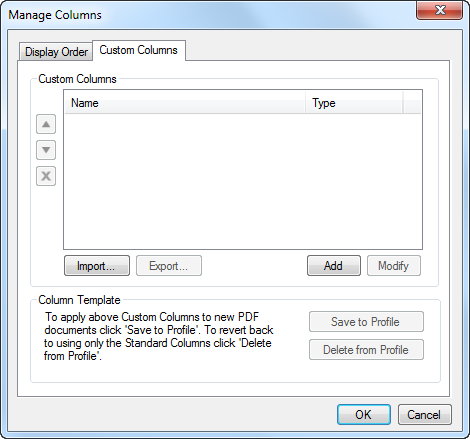
-
Click Add. The Add Column dialog box appears.
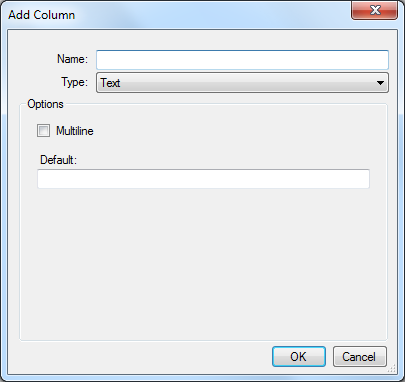
- Enter a display name for the column in the Name field.
-
Select Formula from the Type list.
- Enter the formula in the Expression field. Formulae can consist of the following elements:
- Variables: Includes column names like Area, Count, Length, , Volume, and so on. Any new custom columns created will be added to this list
- Constants: Includes the value of e, value of pi, and so on.
- Functions: Includes acos, asin, atan, ceiling, cos, floor, ln, log, round, sin, sqrt, and tan.
Operators: Includes:
- Addition (+)
- Subtraction (-)
- Multiplication (*)
- Division (/)
- Exponential (^)
- Modulus (%)
- Negation (-)
When you start typing in the Expression field, a list of available Variables, Constants, Functions, and Operators appears. Select the desired elements, one at a time, to build your formula.
You can also manually manipulate your formula, if necessary. For example, adding parentheses changes the order of operations, as in this formula: ( [Price] - [Discount] ) * [Quantity].
See Tutorial: Custom Columns for Takeoffs and Estimations for a thorough walkthrough detailing the creation of some common kinds of formula.
- Select the display characteristics of the numerals from the Format list. The options are: Normal, Currency, or Percentage.
- Select the number of decimal places (between 0 and 6) of numeric values from the Decimal Places list.
- Select the currency type (if Currency has been selected as the Format) from the Currency Symbol list.
- Check Include In Totals to include the result of the formula when calculating the section divider in the Markups list.
- Click OK.
About the Measurement column in formulae:
Measurement is a default column in Revu that is important when defining formulas. The Measurement column contains only the numeric value of the primary measurement of a markup and does not contain the unit descriptor.
The measure markups like Length, Width, and Area contain an unit descriptor like in, cm, or sq ft. This makes these columns more readable in the Markups list, but also makes them unusable in a formula. The Measurement column removes the unit so only the value remains.
The Measurement column also contains the value no matter what type of measure markup was used. The Measurement column will automatically contain the value of a Length, Area, or Count.
 Manage Columns. The Manage Columns dialog box appears.
Manage Columns. The Manage Columns dialog box appears.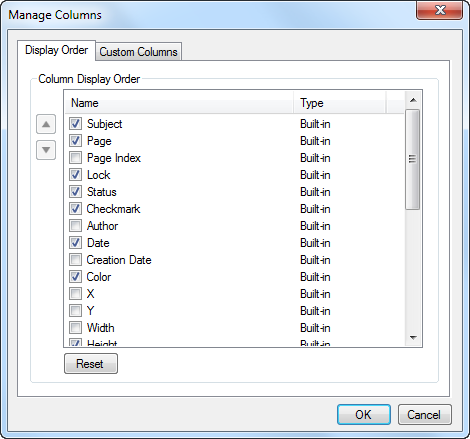
 Up or
Up or  Down button to move it into the desired position. Columns are shown in the order found here.
Down button to move it into the desired position. Columns are shown in the order found here.

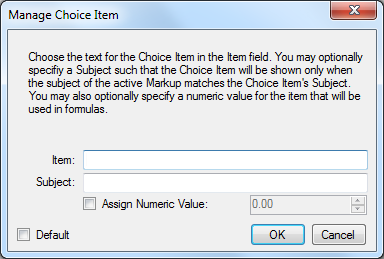
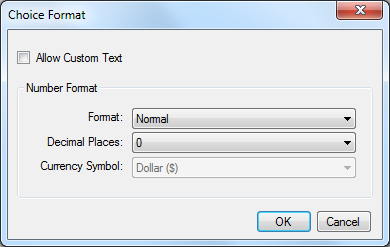
 to select a date from the calendar.
to select a date from the calendar.